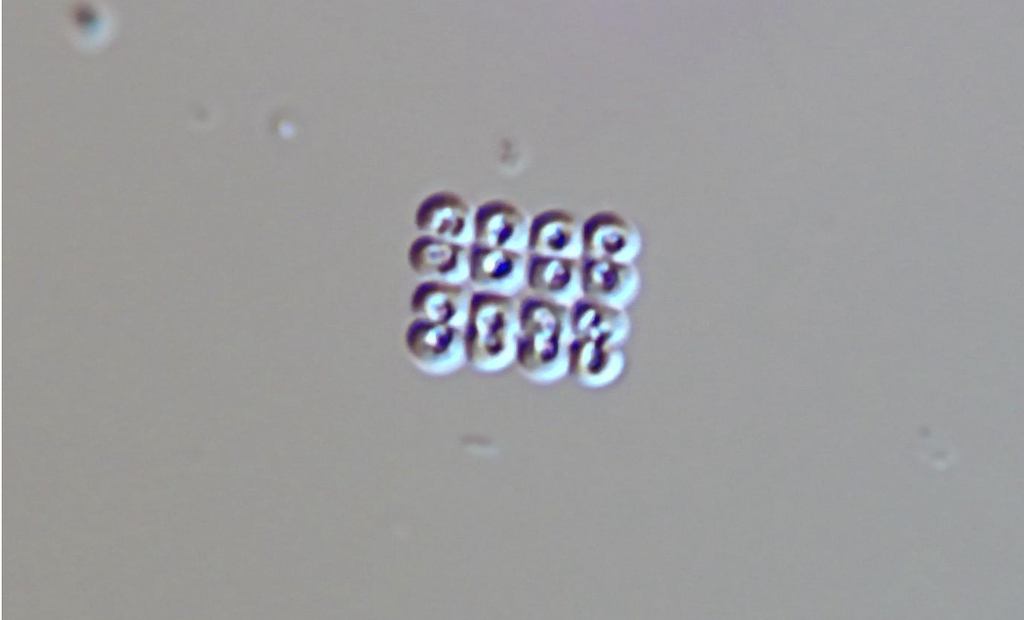Interested in Odor Control?
Get Odor Control articles, news and videos right in your inbox! Sign up now.
Odor Control + Get AlertsThe microorganism morphotype description for this month’s feature has been recognized as the Thiopedia morphotype by Dr. Michael Richard and Dr. David Jenkins. The NCBI database recognizes the species Thiopedia rosea, and the genus Lampropedia is a potential alternate name. Both names are recognized to belong to the Comamonadaceae family of the Gammaproteobacteria subclass.
Thiopedia are purple anaerobic sulfur bacteria that grow in vertical clusters of between eight and 64 cells (based upon experience, clusters of eight cells appear to be most common in biological wastewater treatment systems). Purple sulfur bacteria are gram positive and anoxygenic, using photosynthesis under anaerobic or microaerophilic conditions and hydrogen sulfide as an electron donor. Purple sulfur bacteria can express purple, red, brown and orange pigments and their structure may include intracellular sulfur granule deposits and gas vacuoles. Thiopedia and other purple anaerobic sulfur bacteria are commonly prevalent in septic lagoon and aeration stabilization basins and at high abundance may create a purple, red or pink tint to the water.
Anaerobic sulfur bacteria commonly help to reduce odors due to their utilization of sulfide and have actually been added in certain instances to reduce odor via bioremediation on occasion. From a practical standpoint, if a wastewater lagoon or aerated stabilization basin contains a purple, red or pink pigment, it is recommended to determine if anaerobic sulfur bacteria such as Thiopedia may be the cause. Hydrogen sulfide (an anaerobic sulfur bacteria food source) is commonly precipitated with chemicals such as iron and aluminum salts or may be oxidized through methods such as aeration, addition of hydrogen peroxide or potassium permanganate, or may be prevented from forming if aerobic conditions are maintained. Note that there is high diversity of anaerobic sulfur bacteria, and from a practical standpoint, these bacteria are best recognized under the microscope by observing their intracellular sulfur granules.
About the author: Ryan Hennessy is the principal scientist at Ryan Hennessy Wastewater Microbiology. He was trained and mentored by Dr. Michael Richard for over 10 years in wastewater microbiology, and serves as a microbiology services consultant. Hennessy is a licensed wastewater treatment and municipal waterworks operator in the state of Wisconsin and fills in as needed for operations at several facilities. He can be reached at ryan@rhwastewatermicrobiology.com. Hennessy's new book "Wastewater Microbiology: Filamentous Bacteria Morphotype Identification Techniques, and Process Control Troubleshooting Strategies" is now available on Amazon.






